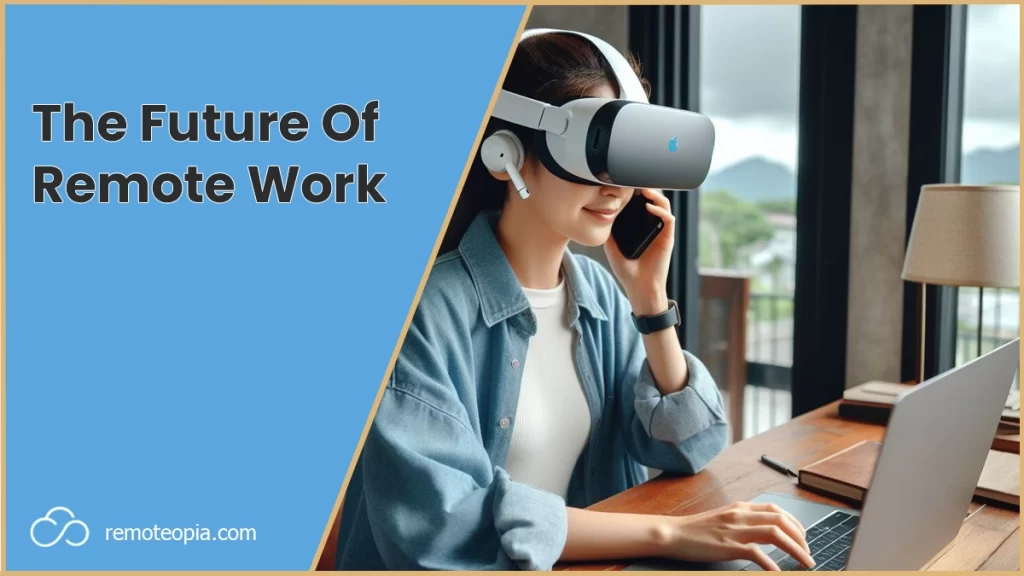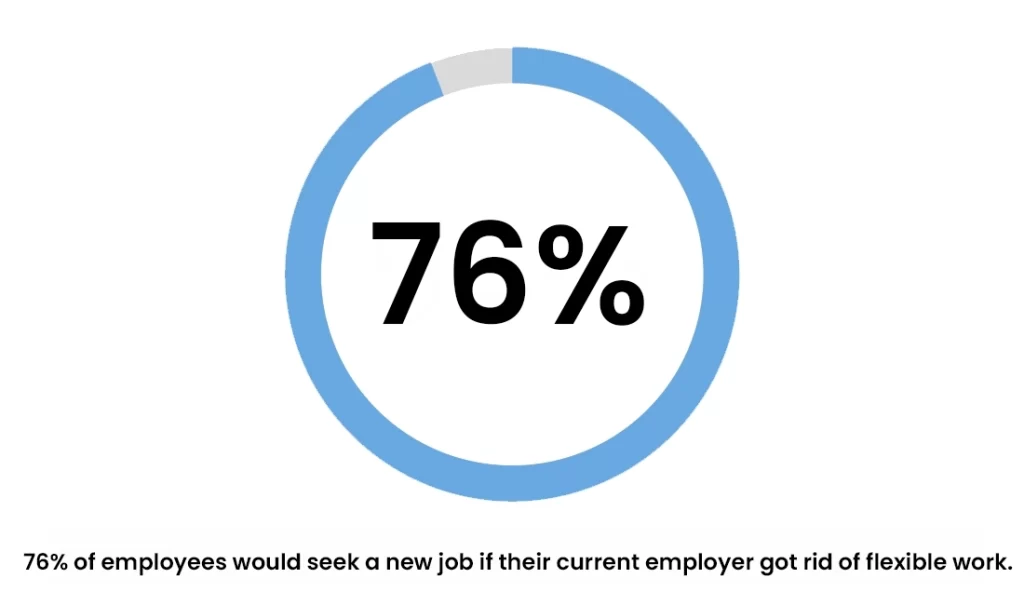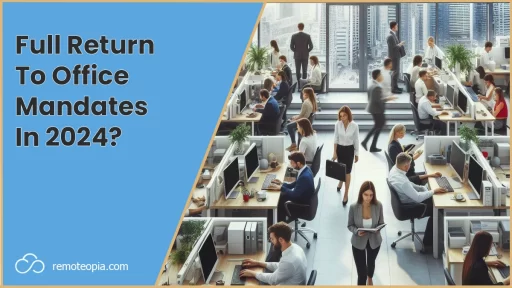
Did you know, before the pandemic only 9.7% – 10.7% of workers did some remote work?
The landscape of work has undergone a seismic shift in the wake of the COVID-19 pandemic, with remote work transitioning from a luxury to a necessity for many.
This shift has sparked a global conversation about how we work and the future of remote work’s role in society.
The big questions for businesses and employees center around sustainability, productivity, and the future trajectory of remote work.
With the dust now settled on the pandemic, 2024 is the year that decisions have to be made on remote work’s future role in our lives, with flexibility and adaptability set to revolutionize how we work for good.
Key Takeaways
Evolution Of Remote Work
The history of remote work goes back further than you might think.
Post pandemic, with the changing habits of employees and companies scrambling to recalibrate, we’re now in unchartered territory.
From Office To Remote: The Pandemic’s Impact
After the catalyst of COVID-19, remote work moved from a niche option to an essential part of the workforce overnight.
Companies rushed to adopt work from home policies and gradually began to reassess traditional office roles.
This abrupt change showed that many jobs could be done outside of the office setting and challenged long-held beliefs about productivity and efficiency in the workplace.
Emerging Trends In Work Environments
A number of years later with office based work opening back up again, the majority of businesses have landed at hybrid work models being the compromise that provides the best of both worlds for both employees and staff.
These models offer a blend of in-office and remote work, catering to a desire for more flexibility.
76% of employees state they’d seek a new job if their employer got rid of flexible working. (Greenhouse).

Employees are seeking positions that offer the ability to work remotely at least part of the time, making flexibility a key factor in recruitment and retention.
As the future of work continues to evolve, the role of remote work will likely change further, with both employers and employees seeking to strike a balance between the benefits of in-person collaboration and the autonomy of remote work.
A Globalized Workforce
By catering to the needs of the new workforce, remote work has expanded the talent pool for companies, allowing them to hire across geographies.
This created unparalleled competition for roles as you were no longer just competing with those in your local region.
This could be a benefit that is slowly withdrawn in the future as companies are beginning to mandate a partial return to the office.
The labour force and talent reach of businesses could now be narrowed back down to within commutable distances of offices.
Future Of Remote Work Predictions
The landscape of remote work is evolving rapidly with significant trends such as hybrid working models, integration of artificial intelligence (AI), and advancements in cybersecurity shaping its future.
Hybrid Working As The Future Of Remote Work
Hybrid working models are gaining momentum as the preferred future structure for many organizations.
Employees are also showing a strong preference for this approach, with a substantial 83% (Notta) favoring a combination of office and remote work over being entirely remote or on-site.
The Role Of AI In The Future Of Remote Work

AI’s role in remote work is expanding, enhancing productivity, and personalizing experiences for remote employees.
Immanently, advances in AI are likely to facilitate better project management, automate routine tasks, and offer predictive insights, making remote work more efficient and interconnected.
Slightly longer-term, common remote roles such as data entry and customer service could be the first to face an existential crisis as human workers are replaced by AI and automation.
The future of AI in not only remote work, but work in general, pans all the way from exciting opportunity to supplanting human workers for good.
The Changing Face Of Offices
The shift toward hybrid work also has geographical and real estate implications, as companies reconsider their physical office needs – which could lead to a greater decentralization from urban centers to suburbs.
In response to these changes, employers are re-evaluating the design of their offices to better suit this new way of working, emphasizing collaborative spaces over individual workstations.
London’s 22 Bishopsgate is an example of how office buildings are now being structured to entice workers back with a heavy focus on amenities and culture.
Designed to elevate the health, wellbeing, and happiness of our tenants and visitors, 22 Bishopsgate is more than just a workplace.
(22 Bishopsgate)
A KPMG CEO Outlook survey found 64% of leaders globally, and 63% of those in the UK, predicted a full return to in-office working by 2026.
This doesn’t align with the numbers behind what employees want (83% preferring hybrid).
The restructuring of office space and the provision of enticements such as free lunches and new onsite amenities appears to be a lever that’s being pulled to make offices more like homes.
An idea clearly built around enticing employees back to major cities by reshaping their perspectives of traditional offices.
Challenges And Opportunities
The new future of remote work is set to bring about a number of challenges and opportunities for those willing to adapt to a new way of working.
Managing Remote Teams

Effectively managing remote teams requires a balance between maintaining productivity and upholding morale.
Managers must establish clear communication channels and regular feedback mechanisms.
A McKinsey analysis emphasizes the importance of structured management approaches to support a varied workforce that includes both on-site and remote employees.
Despite physical distance, building strong relationships and a sense of belonging among remote teams remains critical.
The Future Of Collaboration And Innovation
Collaboration and creativity have traditionally relied on face-to-face interactions.
Whilst managers have adapted to remote workforces, there’s still a sense that collaboration and communication can be improved.
Businesses must continually leverage collaboration tools to facilitate the exchange of ideas and foster innovation.
The task is to create a ‘virtual watercooler’ environment that encourages spontaneous conversations and maintains corporate culture.
Infrastructure And Access
The potential for remote work varies widely by geography and occupation.
For industries like finance and tech, adapting to flexible work is often smoother than for sectors like manufacturing, where physical presence is key.
Moreover, the accessibility of remote jobs can be uneven, with countries like India facing a significant digital divide.
Addressing disparities in infrastructure and access is fundamental to ensuring equitable remote work opportunities for global companies.
Future Of Remote Work Conclusion
We’re at a crossroads with the future of remote work.
Employees and their companies are going to have to come to a compromise to help maintain harmony.
They way I see it is that hybrid models will become the norm. Businesses will look to leverage technology and particularly AI as a means of productivity to counteract any perceived notion of ineffectiveness.
The traditional CBD office will be no-longer and the blend of personal and business lives will become deliberately more blurred as companies and staff both create an equitable work-life balance structure to work.
Frequently Asked Questions

James Waite
Founder of Remoteopia, James has worked in remote roles for 6 years. After a stint in recruitment, he now works as a director of website strategy in tech.




